Galaxies are almost unimaginably large and far apart. At the same time we have direct evidence that galaxies do sometime collide with each other. The Andromeda galaxy, our nearest large neighbor, is on a collision course with the Milky Way. That makes this discussion personal on some level. What is likely to happen when our galaxy and the Andromeda galaxy collide? Then there is the question about other cosmic disasters. A nearby supernova, a brush with a brown dwarf star or some other star, the collapse of the earth's magnetic field. We will take a look at some or all of these possibilities in this discussion.
Colliding Galaxies:
What is clear is that the universe is vast and there are so very many galaxies. All matter pulls on other matter through the force of gravity. It would not be a surprise to find circumstances where two galaxies are pulled together or pass through each other.
Here are a range of images (thanks to NASA's image database of the use of these images) that are fascinating partly for the difference in the apparent outcomes:
These two galaxies are circling each other and pulling each other apart.(NGC 2207 - on left and IC 2163)
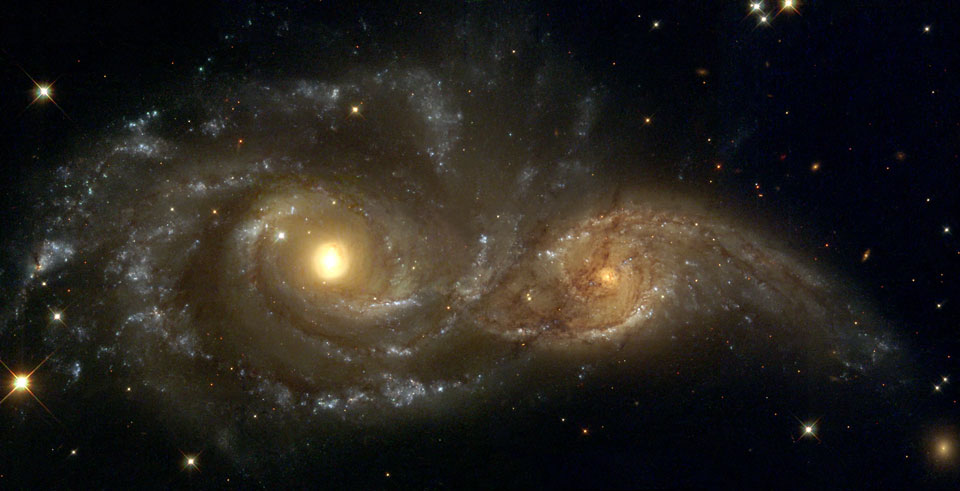
These are called the Antenna Galaxies and represent an alarming aftermath to a collision between galaxies. In this case the structure of both galaxies has been substantially disrupted. Yikes!
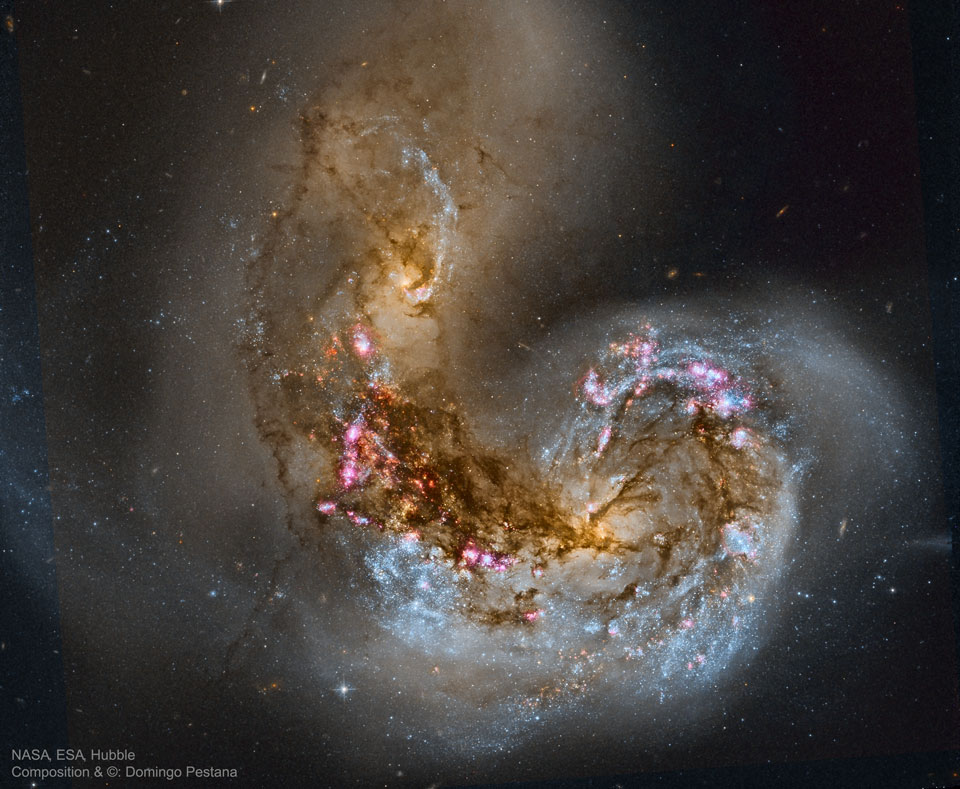
On the other hand the Sleeping Beauty galaxy is thought to also be the aftermath of the collsion between two galaxies (because some parts of it are rotating in a different direction than other parts) and yet the overall structure seems to be preserved.
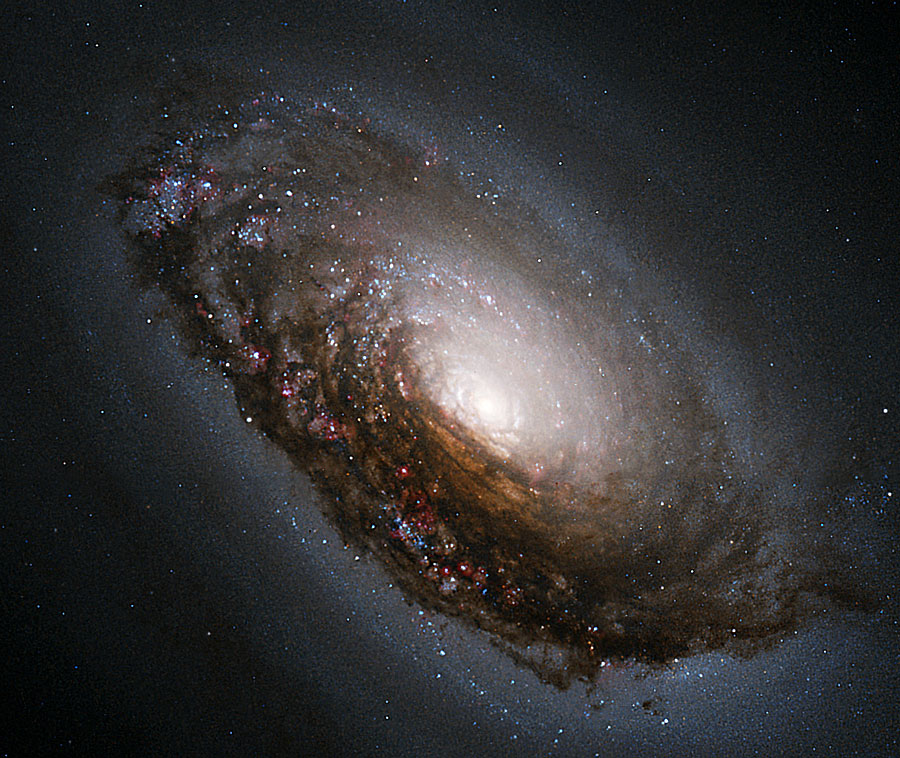
Remember that all of the universe is mostly made up of 'empty' space (except for dark matter) which is helpful when looking at this image of two galaxies which have passed through each other and have emerged relatively unscathed though there is a trail of gas connecting them after the pass through. Notice the young blue stars that formed along the trail of dust and gas between the galaxies and elsewhere.
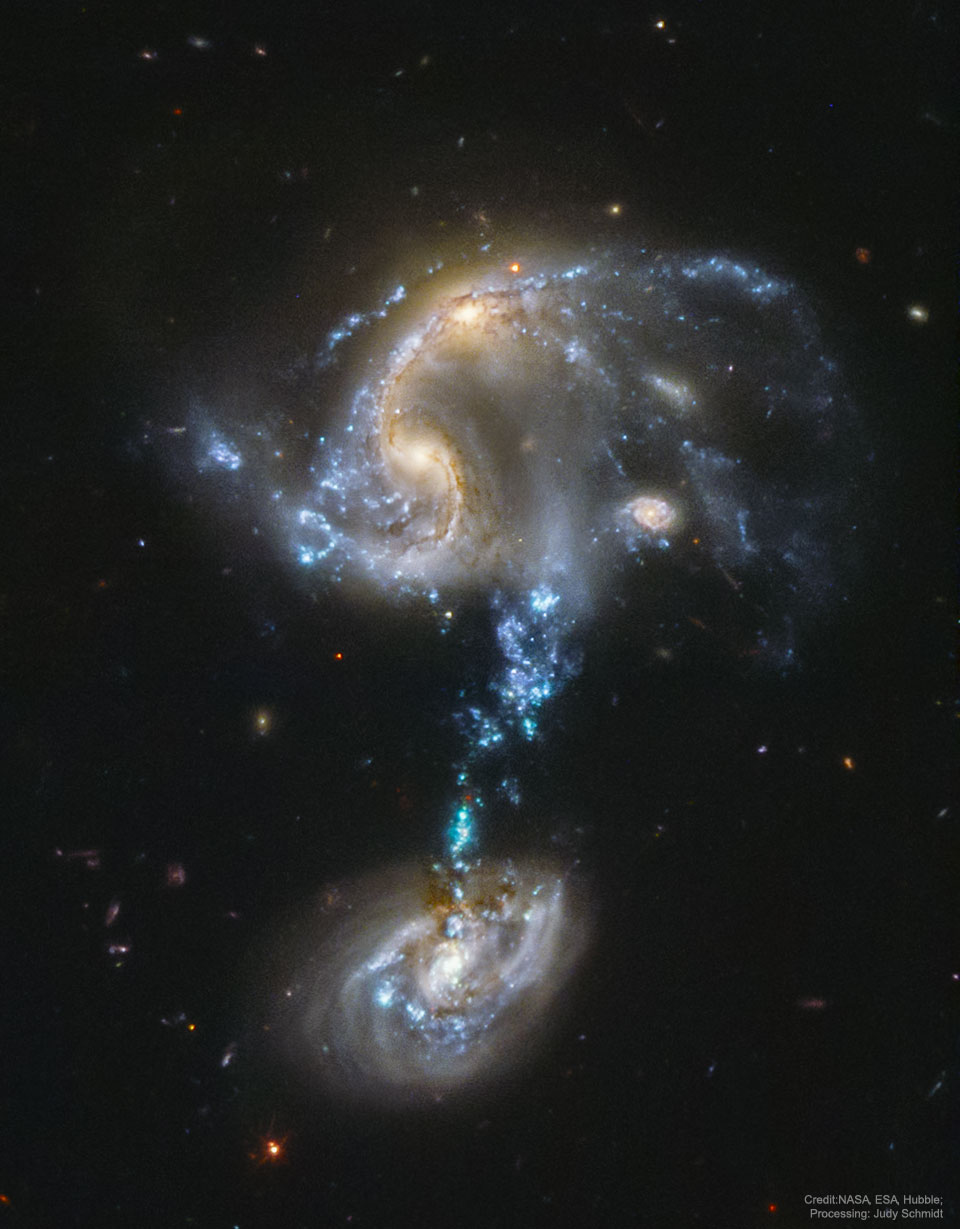
This galaxy (NGC 6240) appears to be at a stage that is near the final merging of two galaxies. A different perspective on the same process.
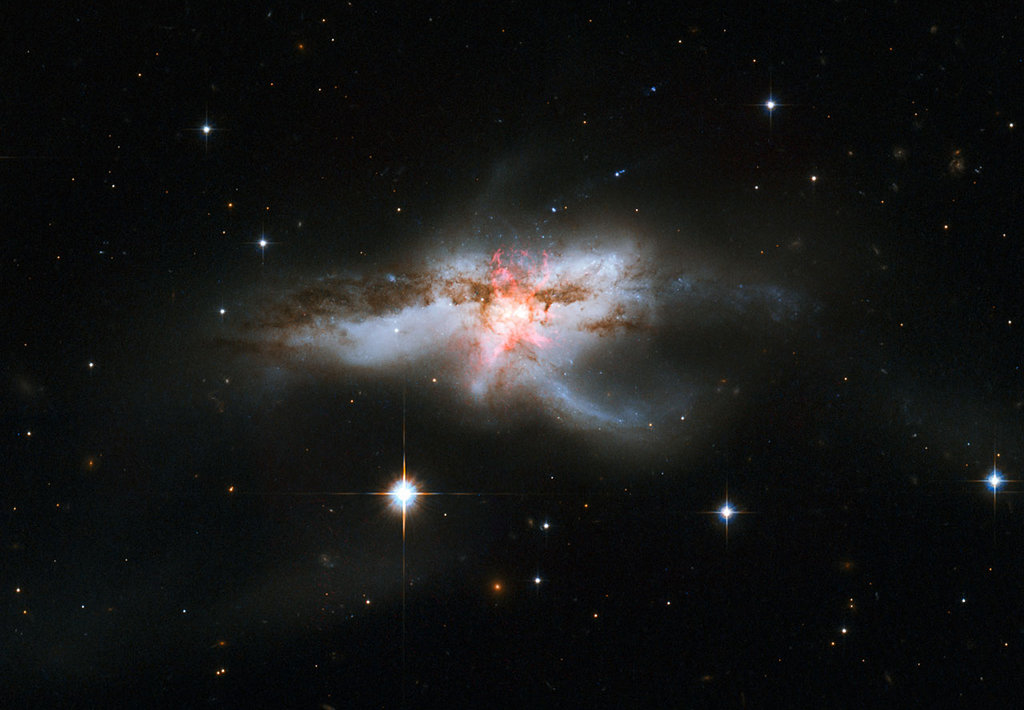
Andromeda and Milky Way Collision:
Recent measurements have confirmed that the Andromeda Galaxy (M31) is on a trajectory to collide with our own galaxy (Milky Way). Current projections are that this will take place around 3.75 billion years from now. Needless to say that is a long long time from now so I hope no one loses any sleep over it. As the Andromeda galaxy comes close to our galaxy the night sky will be quite dramatic for millions of years. Here is an artists rendering (again from NASA) of what the night sky might look like at some point in that process. Interesting to imagine but hard to say whether humans will be around to notice. It is probably important to remember that our own sun will only last another 3.5 billions years or so. It is possibly relevant to note that as the sun is aging it is getting brighter (putting out more energy) at a rate of about 10% every billion years. Even an increase in brightness of a few percent will make global warming seem like a day at the beach. Earth is likely to uninhabitable, as we know it now, in less than 1 billion years. Still, its fun to think about what the night sky might look like.
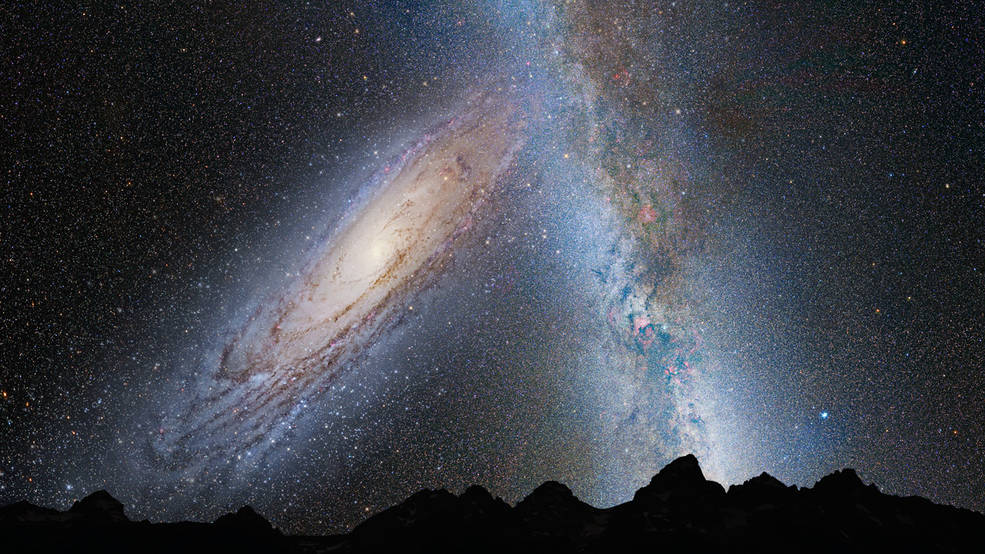
Other Cosmic Disasters: Nearby SuperNova
Being near a supernova can't be a good thing. Consider this image of the Crab Nebula which is the aftermath of a supernova in 1054 that was recorded by Chinese astronomers. The nebula is formed from the ejected material from the supernova 1000 years ago and is currently about 10 ly in size. This supernova was about 6000 ly from us.
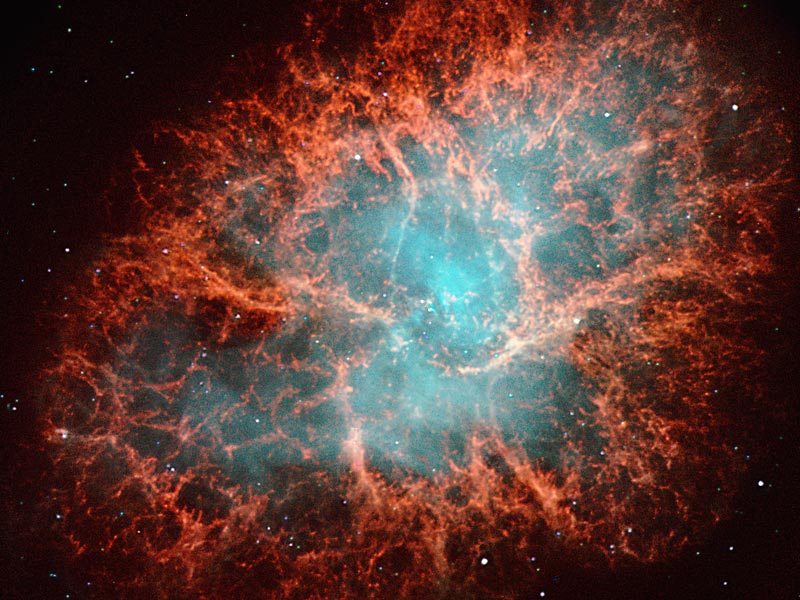
A supernova releases a remarkable amount of energy in the form of radiation and folks have been considering what the possibly impacts would be on earth. This paper explores the possibility that radiation from a particular supernova may have caused the Pliocene mass extinction here on earth. Other investigations have suggested that a supernova within about 50 ly of earth is pretty dangerous. However, there are no large blue stars of the right kind that would produce a typical supernova within that distance. Whew, no worries then.
Unfortunately there is another type of supernova which is a little harder to detect since it originates with white dwarf stars in specific circumstances. Because white dwarfs are so dim we are uncertain how many there are near us and that could be an issue. As we found in Jackie Faherty's talk about the Milky Way galaxy and the GAIA data, every time we put a better or different telescope up in space we discover new things about our neighborhood. Perhaps someday we'll have a clearer picture of our risk from white dwarf supernovae.
Other Cosmic Disasters: Gamma Ray Burst
Another potential cosmic disaster is known as a gamma ray burst (GRB). We have observed a number of cases where very strong radiation seems to be coming from a specific direction in the universe. After lots of modeling we think these sources of energy are highly directed beams from a variety of possible settings. There is lots that is still not understood but it seems clear that if a GRB occured within the Milky Way galaxy and the earth were in the path of the beam it would eliminate all life on earth. Even if the GRB were in a nearby galaxy it might have similar effects. At this time all GRB's that have been observed are very far away and not a danger. They do appear to be rare and it would be seriously bad luck if we just happened to be in the way of the beam. Whew!
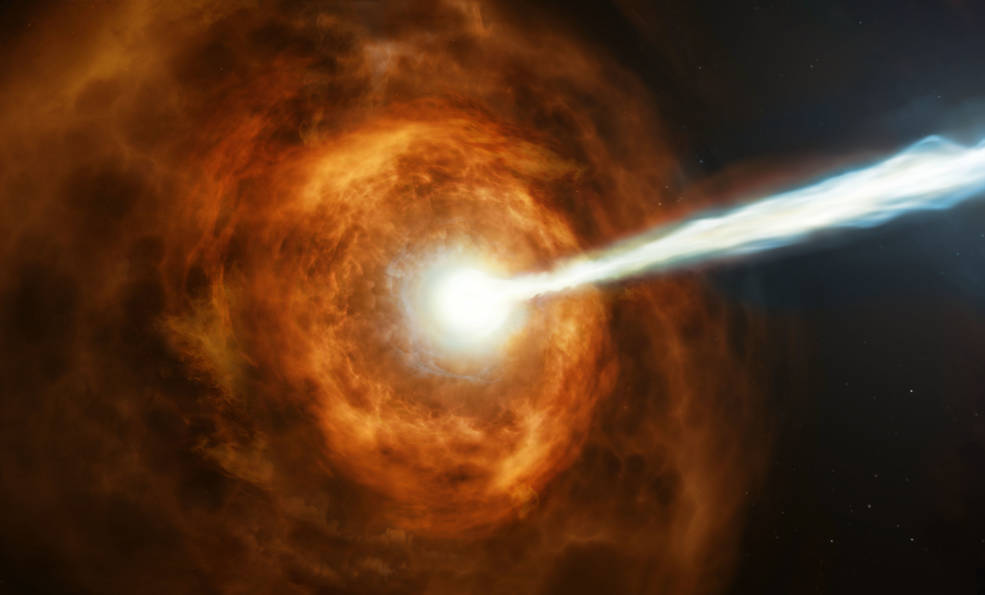
HW: Cosmic Disaster
Since we are quite sure that the Andromeda Galaxy will collide with us in the future why is this not a cause for significant concern that we should be planning for? Be specific as if you were explaining this to a curious friend at a party.
HW: Cosmic Disaster
Why are we NOT concerned with a nearby supernova (from a hot blue star) wiping out life on earth? Why is it less clear whether the supernova of a white dwarf is a real risk?
HW: Cosmic Disaster
Give two reasons why astronomers are not particularly worried about the possibility of a GRB wiping out all life on earth.
